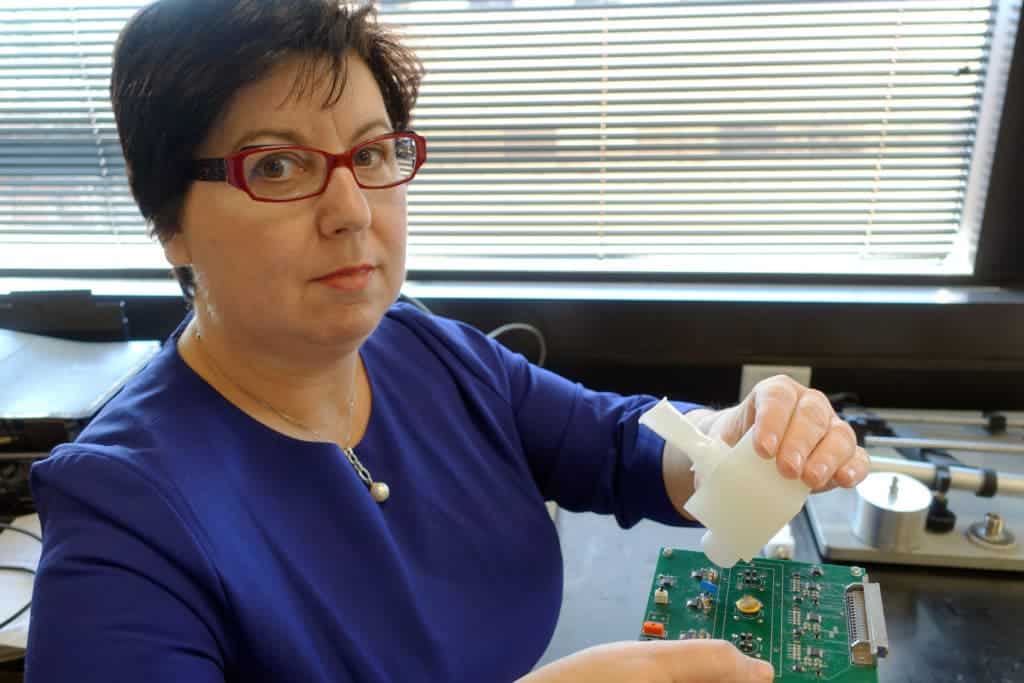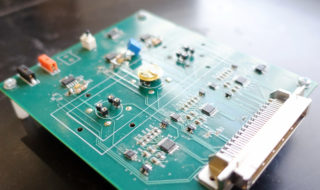
Perena Gouma pictured with her invention — a hand-held breath monitor that can detect the flu virus. Credit: UT Arlington
American researchers from the University of Texas at Arlington have invented a breath analyzer similar to the one used by the police to screen DUIs, only instead of alcohol the device detects the flu virus. You simply exhale into the nozzle of the device and semiconductor sensors quickly detect whether or not there’s a sign of the flu.

Sensors typically used to detect asthma and diabetes were combined to spot biomarkers of the flu virus. Credit: UTA.
A flu diagnosis device might seem silly. After all, it’s no secret you’ve got the flu when the forehead is burning, muscles ache or nose is running. But such a device could be truly valuable if people used it to screen for flu before the symptoms hit.
Perena Gouma, a professor in the Materials Science and Engineering Department at The University of Texas at Arlington, envisions such a tool used anywhere from hospitals to drugstores. People simply have to exhale and can in a matter of seconds learn whether or not they’ve been infected. Patients can then take preemptive measures before the symptoms kick in. Whole flu pandemics could be halted and lives saved — around 4,600 people die because of the flu yearly, according to the CDC.
The flu breathanalyzer’s working principle works on the validated idea that a person infected with the flu exhales certain biomarkers. These markers have been extensively studied and documented in scientific literature. Based on this knowledge, it was a matter of tuning gas sensors to these markers. Specifically, a nitric oxide and an ammonia sensor were used to make it possible to detect the flu virus.
“I think that technology like this is going to revolutionize personalized diagnostics. This will allow people to be proactive and catch illnesses early, and the technology can easily be used to detect other diseases, such as Ebola virus disease, simply by changing the sensors,” said Gouma.
Previously, the only way to detect flu biomarkers from a person’s breath was to use very expensive lab equipment operated by trained, highly paid personnel. Theoretically, anyone could use the device developed at UTA.
There’s no reason to believe why a similar device can’t be used to detect a range of other diseases, including Ebola.
Findings appeared in the journal Sensors.









